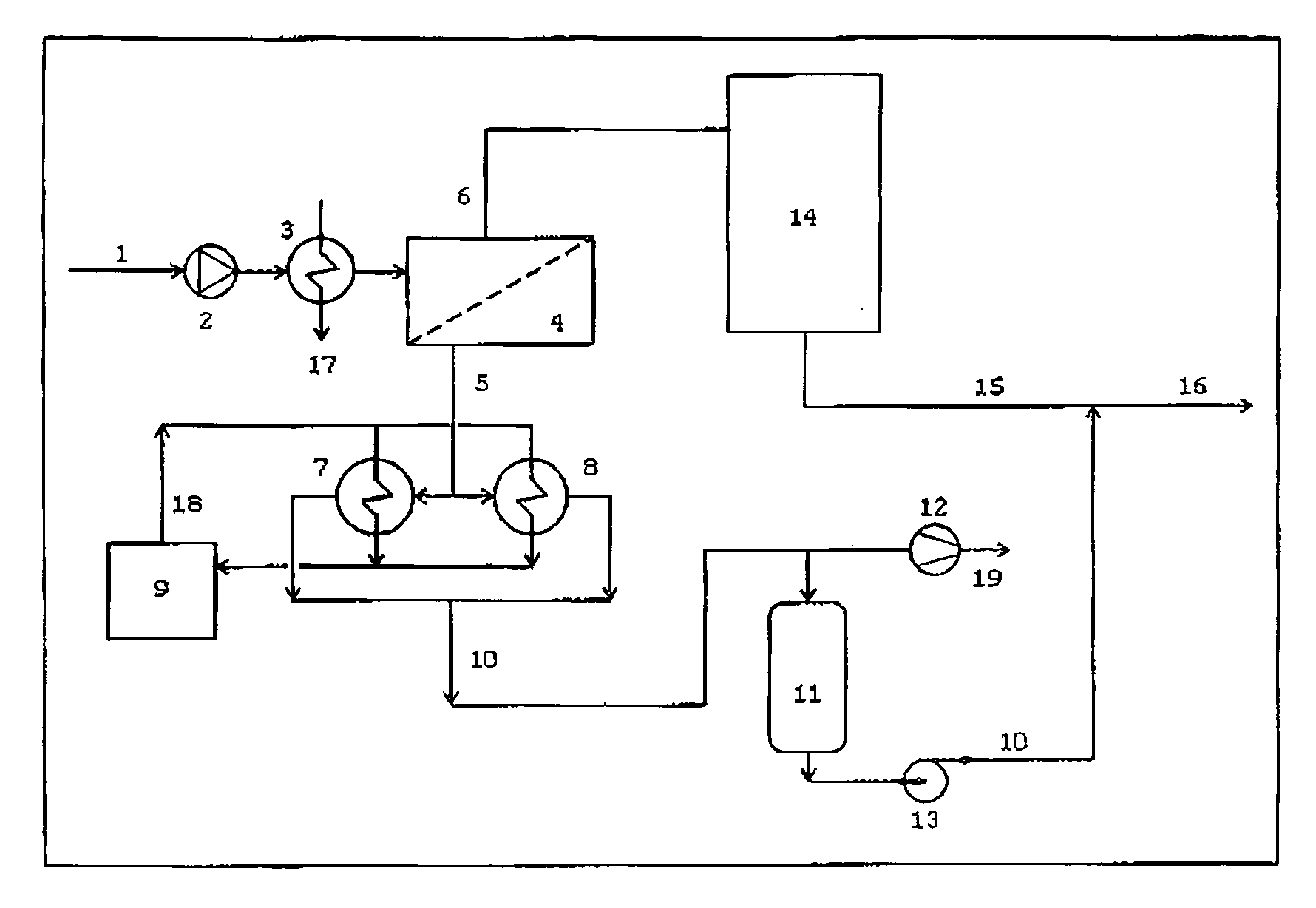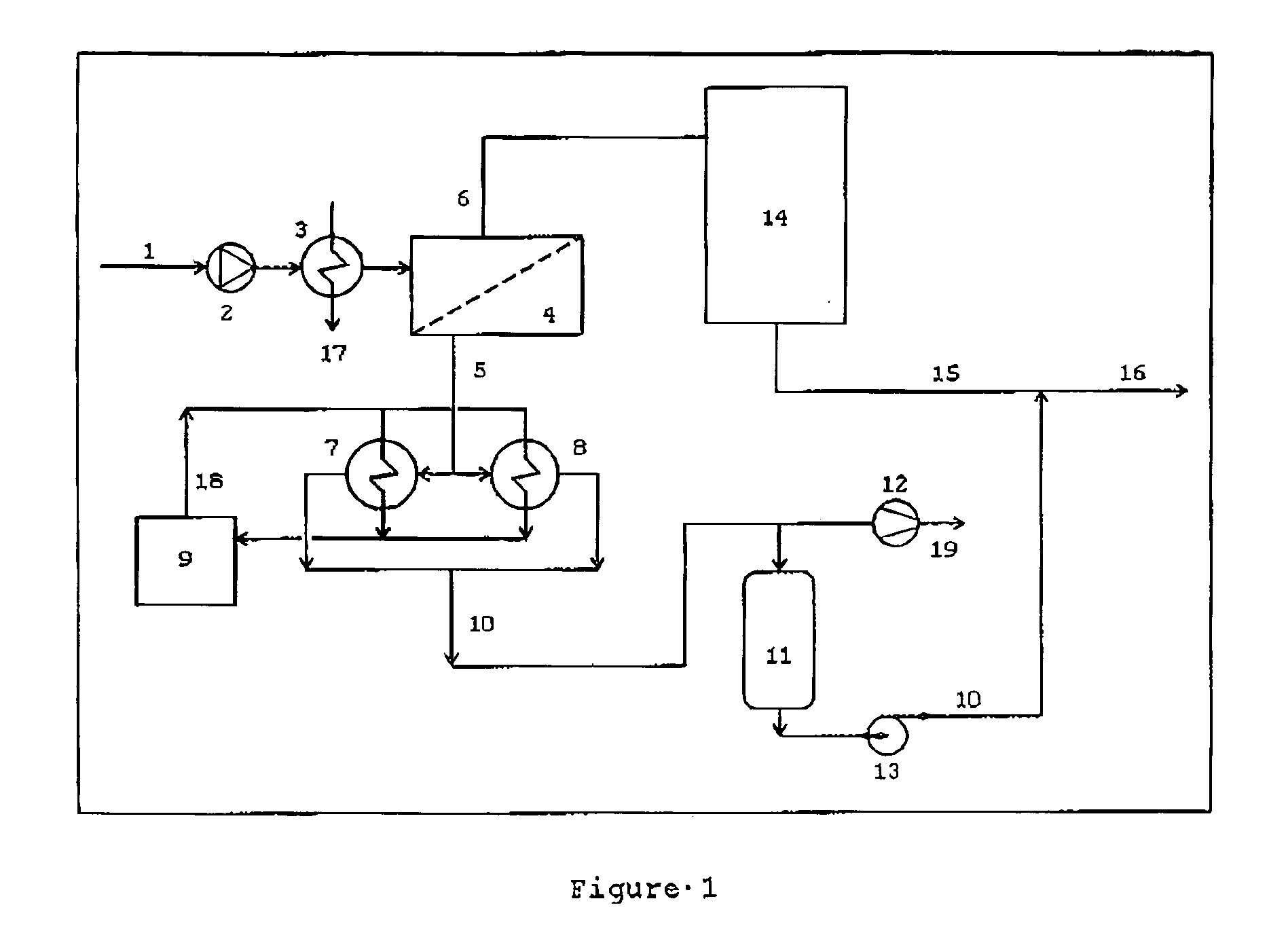Process for enriching the aroma profile of a dealcoholized beverage
a technology of aroma profile and alcoholic beverage, which is applied in the field of extraction/recovery of aroma compounds from alcoholic beverages, can solve the problems of increasing pressure on the permeating side, and achieve the effects of reducing vacuum costs, increasing productivity, and reducing head loss
- Summary
- Abstract
- Description
- Claims
- Application Information
AI Technical Summary
Benefits of technology
Problems solved by technology
Method used
Image
Examples
example 1
[0056]Extraction of Aroma Compounds from a Regular Alcohol Content Beer using a Lab Pervaporation Unit
[0057]The original beer (alcohol content around 5.5% v / v), stored in the feeding tank, is sent to a membrane module, with an effective membrane area of 107.46 cm2. The membranes used are flat POMS composites with a thickness of about 1.5 μm, supported in a porous layer of PEI. The feed stream is pumped by means of a centrifugal pump. Before entering in the membrane module, the feed stream is fractioned and a portion thereof is recycled back to the feeding reservoir, through a plate heat exchanger (effective area of 20 dm2). The other feed fraction is directed to the membrane module and the aroma compounds selectively permeate through the membrane, wherein the driving force results from the sub-atmospheric pressure by means of a vacuum pump with a nominal minimum vacuum pressure of 0.2 Pa and a maximum water vapor flow rate of 0.22 kg·h−1.
[0058]The permeate leaves the membrane in the...
example 2
[0063]Industrial Production of a Non-Alcoholic Beer from an Alcoholic Beer with Reincorporation of Original Aroma Compounds
[0064]The original beer (1), from which it is intended to extract the aroma compounds, is a concentrated beer with about 6% v / v alcohol content and with a residual carbon dioxide content (around 3.8 g·l−1). The beer is fed into the membrane module (4), with an effective area of 40 m2 of composite POMS supported in PEI membrane. The transfer of the original beer to the module is made by a centrifugal pump (2) at an absolute pressure of 0.25 MPa, in order to keep a maximum pressure drop of 0.2 MPa between the feed and retentate sides of the module. The feed flow rate is 20 hl·h−1. Before entering the separation module, the beer might be heated from 5 to 40° C., in order to increase the membrane productivity and to improve the selectivity towards the most desired compounds. In order to warm the beer stream and keep it at a stable temperature, water can be used in c...
PUM
| Property | Measurement | Unit |
|---|---|---|
| thick | aaaaa | aaaaa |
| temperature | aaaaa | aaaaa |
| permeate pressure | aaaaa | aaaaa |
Abstract
Description
Claims
Application Information
 Login to View More
Login to View More - R&D
- Intellectual Property
- Life Sciences
- Materials
- Tech Scout
- Unparalleled Data Quality
- Higher Quality Content
- 60% Fewer Hallucinations
Browse by: Latest US Patents, China's latest patents, Technical Efficacy Thesaurus, Application Domain, Technology Topic, Popular Technical Reports.
© 2025 PatSnap. All rights reserved.Legal|Privacy policy|Modern Slavery Act Transparency Statement|Sitemap|About US| Contact US: help@patsnap.com


